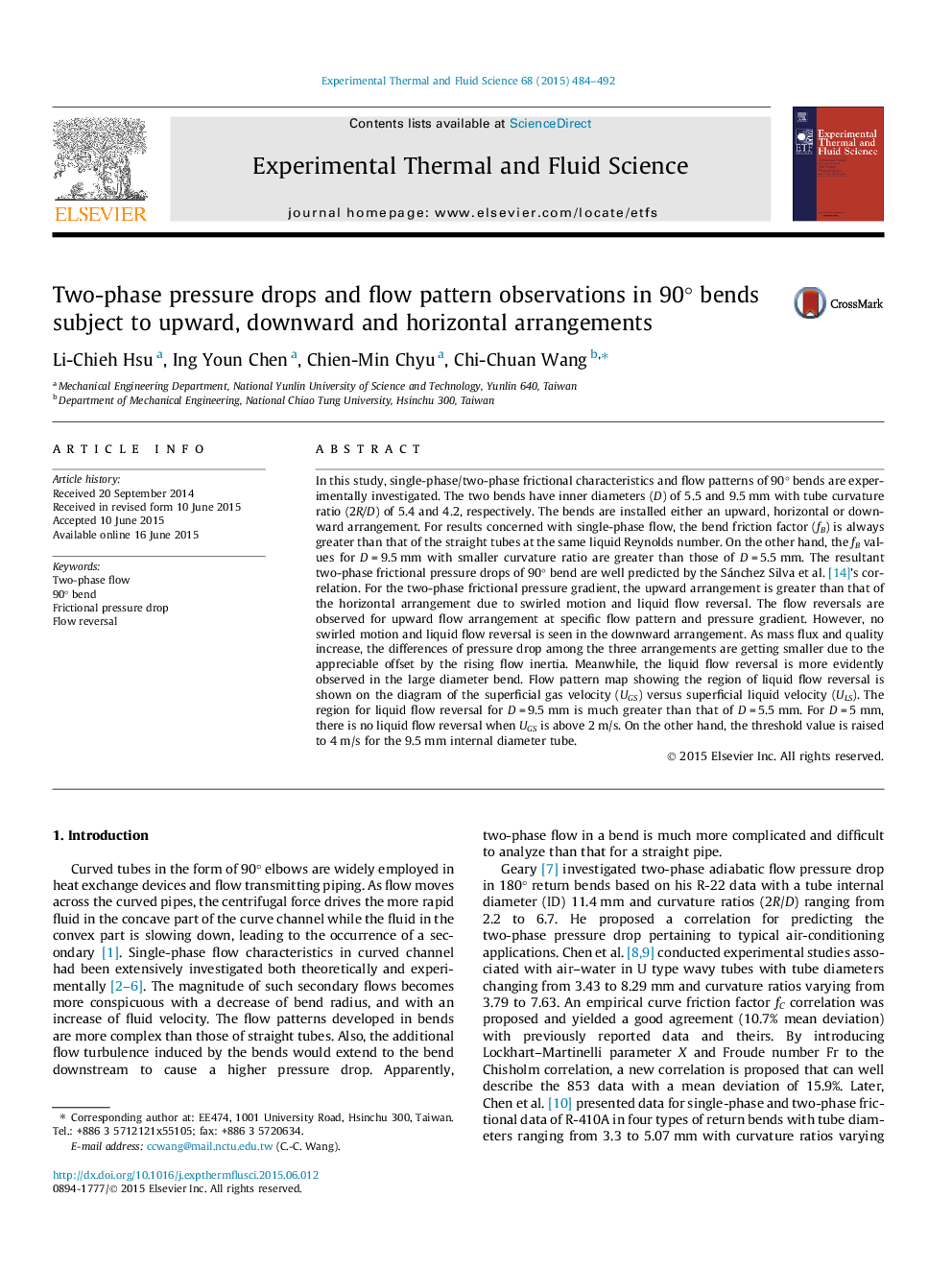| Article ID | Journal | Published Year | Pages | File Type |
|---|---|---|---|---|
| 7052211 | Experimental Thermal and Fluid Science | 2015 | 9 Pages |
Abstract
In this study, single-phase/two-phase frictional characteristics and flow patterns of 90° bends are experimentally investigated. The two bends have inner diameters (D) of 5.5 and 9.5 mm with tube curvature ratio (2R/D) of 5.4 and 4.2, respectively. The bends are installed either an upward, horizontal or downward arrangement. For results concerned with single-phase flow, the bend friction factor (fB) is always greater than that of the straight tubes at the same liquid Reynolds number. On the other hand, the fB values for D = 9.5 mm with smaller curvature ratio are greater than those of D = 5.5 mm. The resultant two-phase frictional pressure drops of 90° bend are well predicted by the Sánchez Silva et al. [14]'s correlation. For the two-phase frictional pressure gradient, the upward arrangement is greater than that of the horizontal arrangement due to swirled motion and liquid flow reversal. The flow reversals are observed for upward flow arrangement at specific flow pattern and pressure gradient. However, no swirled motion and liquid flow reversal is seen in the downward arrangement. As mass flux and quality increase, the differences of pressure drop among the three arrangements are getting smaller due to the appreciable offset by the rising flow inertia. Meanwhile, the liquid flow reversal is more evidently observed in the large diameter bend. Flow pattern map showing the region of liquid flow reversal is shown on the diagram of the superficial gas velocity (UGS) versus superficial liquid velocity (ULS). The region for liquid flow reversal for D = 9.5 mm is much greater than that of D = 5.5 mm. For D = 5 mm, there is no liquid flow reversal when UGS is above 2 m/s. On the other hand, the threshold value is raised to 4 m/s for the 9.5 mm internal diameter tube.
Related Topics
Physical Sciences and Engineering
Chemical Engineering
Fluid Flow and Transfer Processes
Authors
Li-Chieh Hsu, Ing Youn Chen, Chien-Min Chyu, Chi-Chuan Wang,
